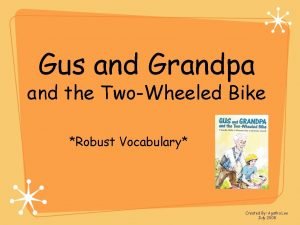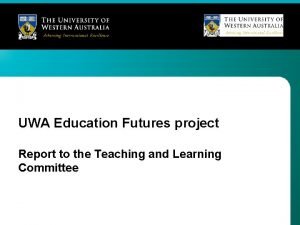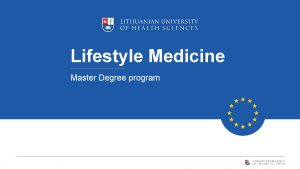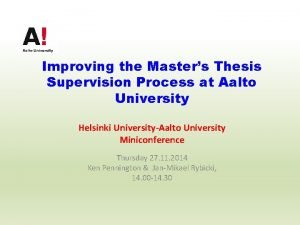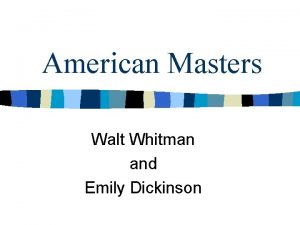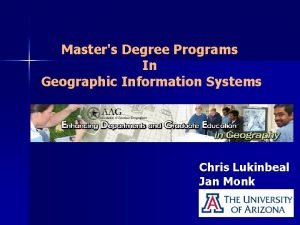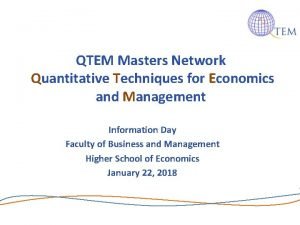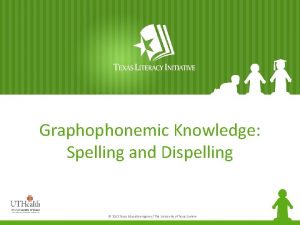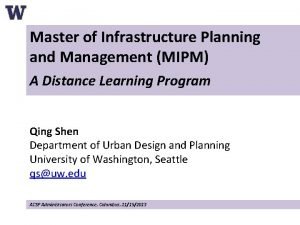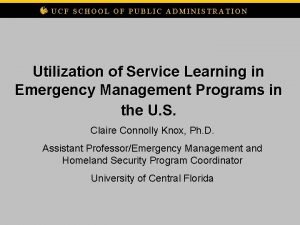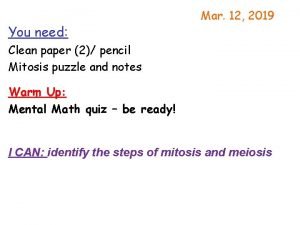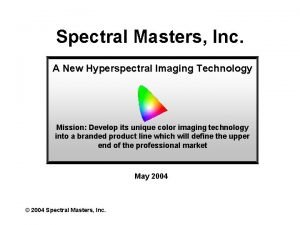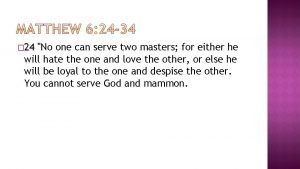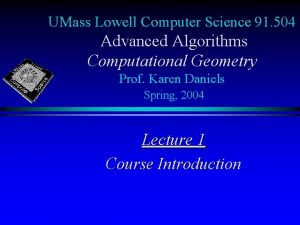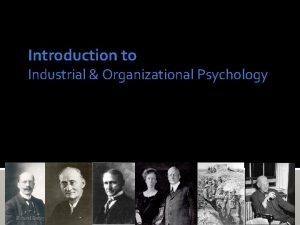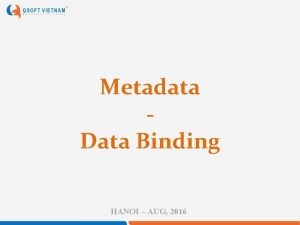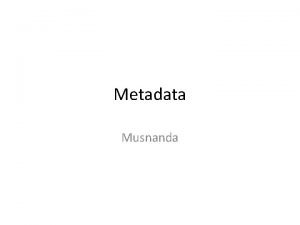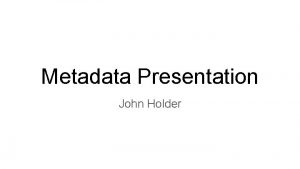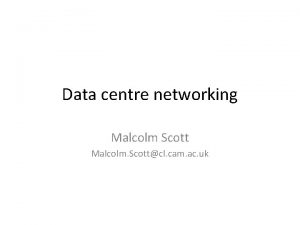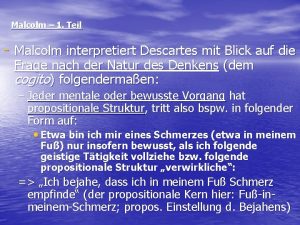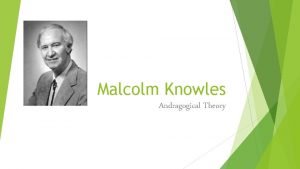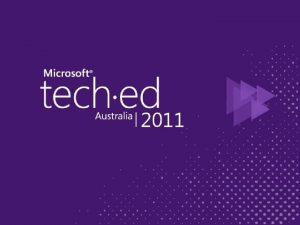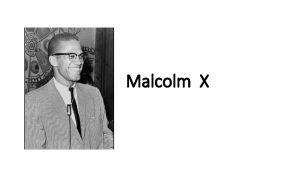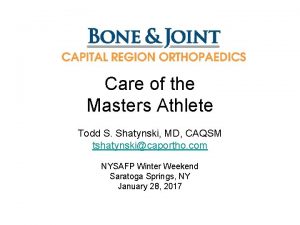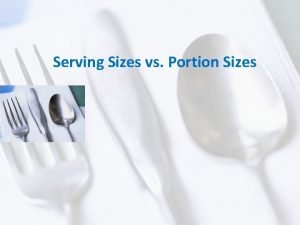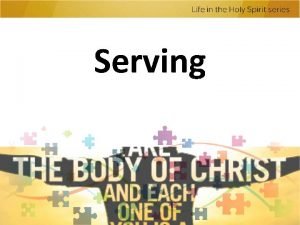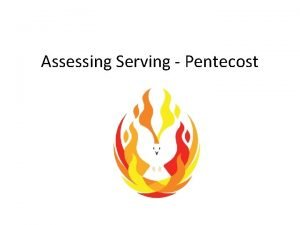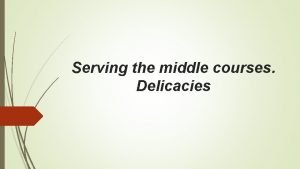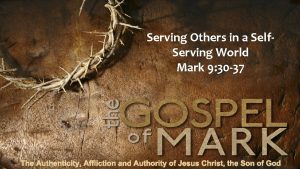Metadata serving several masters Malcolm Todd malcolm toddnationalarchives








![Resource description [1] • • Standard description Flat model: web page paradigm Retrieval / Resource description [1] • • Standard description Flat model: web page paradigm Retrieval /](https://slidetodoc.com/presentation_image_h2/94ef93b2eab61d202ca3299460ade1b2/image-9.jpg)
![Resource description [2] • Some prominent initiatives, esp. DCMI (more tomorrow……) • Rules, paradigms, Resource description [2] • Some prominent initiatives, esp. DCMI (more tomorrow……) • Rules, paradigms,](https://slidetodoc.com/presentation_image_h2/94ef93b2eab61d202ca3299460ade1b2/image-10.jpg)
![Resource description [3] • Issues include: • Archival records • Aggregations of records • Resource description [3] • Issues include: • Archival records • Aggregations of records •](https://slidetodoc.com/presentation_image_h2/94ef93b2eab61d202ca3299460ade1b2/image-11.jpg)
![Resource description [4] Summary to date: “Highly important to work with other professionals in Resource description [4] Summary to date: “Highly important to work with other professionals in](https://slidetodoc.com/presentation_image_h2/94ef93b2eab61d202ca3299460ade1b2/image-12.jpg)

![E-gov initiatives • • • Mi. REG [not Mo. REQ compatible……] DC-GOV [more tomorrow……. E-gov initiatives • • • Mi. REG [not Mo. REQ compatible……] DC-GOV [more tomorrow…….](https://slidetodoc.com/presentation_image_h2/94ef93b2eab61d202ca3299460ade1b2/image-14.jpg)





![Resource description [5] • Repurposing of metadata (e. g. for archival purposes)…… • Descriptive Resource description [5] • Repurposing of metadata (e. g. for archival purposes)…… • Descriptive](https://slidetodoc.com/presentation_image_h2/94ef93b2eab61d202ca3299460ade1b2/image-20.jpg)
![Archival description [1] • Automation (clear those backlogs!) • Robustness • Evidence / diplomatics Archival description [1] • Automation (clear those backlogs!) • Robustness • Evidence / diplomatics](https://slidetodoc.com/presentation_image_h2/94ef93b2eab61d202ca3299460ade1b2/image-21.jpg)
![Archival description [2] • • • Websites? ; Non-hierarchical assemblies? ISAD [G] Exotic formats Archival description [2] • • • Websites? ; Non-hierarchical assemblies? ISAD [G] Exotic formats](https://slidetodoc.com/presentation_image_h2/94ef93b2eab61d202ca3299460ade1b2/image-22.jpg)
![Archival description [3] • Automation of ingestion into preservation systems • Automation of management Archival description [3] • Automation of ingestion into preservation systems • Automation of management](https://slidetodoc.com/presentation_image_h2/94ef93b2eab61d202ca3299460ade1b2/image-23.jpg)



- Slides: 26

Metadata: serving several masters Malcolm Todd malcolm. todd@nationalarchives. gov. uk © Crown Copyright, 2003

Main drivers • • • Resource discovery e-Govt interoperability Records management Digital preservation …. these are not mutually exclusive categories………… © Crown Copyright, 2003

RD / interoperability • Openness (searching) • System talking to system through configuration to support a schema (usually in XML) rather than fundamental design architecture • Legacy systems • Implementation issues © Crown Copyright, 2003

E-Govt interoperability • More on this tomorrow…… • What is the point of some data being comprehensible by other systems? (could be misleading or risky……. ) • Business case ROI doubtful • Very substantial investment (users. . ) • Very long range benefits © Crown Copyright, 2003

Domains/environments • • • Digital preservation Records management Resource description Specialist environments Different, & differences cause problems…. . • QU: Is ours a specialist environment? Discuss © Crown Copyright, 2003

DC compliant RD metadata Records management (administrative / process) metadata Object level technical metadata RD Layer RM layer DP layer Resolving the domains (clashes) e. g. date, format, ©etc. (some overlaps helpful…. ) Crown Copyright, 2003

Digital preservation • Generally (but not exclusively) at the digital object level • ‘Making explicit in the metadata what was implicit in the original environment’ • e. g. ‘ole’ linkage (© MS) • Facilitate emulation, migration, reconstruction or inference of these properties • Support emulation, migration, management of the preservation system © Crown Copyright, 2003

Records management • Structures • Linkage of objects • Context (BCS, ‘documents forming a record’) • Levels of resource • Evidence, accountability • Meaning © Crown Copyright, 2003
![Resource description 1 Standard description Flat model web page paradigm Retrieval Resource description [1] • • Standard description Flat model: web page paradigm Retrieval /](https://slidetodoc.com/presentation_image_h2/94ef93b2eab61d202ca3299460ade1b2/image-9.jpg)
Resource description [1] • • Standard description Flat model: web page paradigm Retrieval / discovery Much of most prominent ‘Metadata’ territory occupied before archivists got to it • Misunderstandings arising & persisting © Crown Copyright, 2003
![Resource description 2 Some prominent initiatives esp DCMI more tomorrow Rules paradigms Resource description [2] • Some prominent initiatives, esp. DCMI (more tomorrow……) • Rules, paradigms,](https://slidetodoc.com/presentation_image_h2/94ef93b2eab61d202ca3299460ade1b2/image-10.jpg)
Resource description [2] • Some prominent initiatives, esp. DCMI (more tomorrow……) • Rules, paradigms, assumptions • ‘Administrative metadata’ dismissal but this is all-important to us • Semantic problems with incorporating ‘specialist’ metadata • e. g. coverage spatial / temporal © Crown Copyright, 2003
![Resource description 3 Issues include Archival records Aggregations of records Resource description [3] • Issues include: • Archival records • Aggregations of records •](https://slidetodoc.com/presentation_image_h2/94ef93b2eab61d202ca3299460ade1b2/image-11.jpg)
Resource description [3] • Issues include: • Archival records • Aggregations of records • Documents [? ] • May or may not equate to digital objects • Capture mechanisms • Source of MD • User compliance • User definition unacceptable • Rules (fixity, encoding) • RD metadata quite inadequate for robust ERM • Google© et al. issue © Crown Copyright, 2003
![Resource description 4 Summary to date Highly important to work with other professionals in Resource description [4] Summary to date: “Highly important to work with other professionals in](https://slidetodoc.com/presentation_image_h2/94ef93b2eab61d202ca3299460ade1b2/image-12.jpg)
Resource description [4] Summary to date: “Highly important to work with other professionals in this area, but how do we do this whilst achieving what we need for our archival domain? ” © Crown Copyright, 2003

How to comply with DCMI for a more complex, ‘specialised’ paradigm? • Comply broadly • Comply more fully • Adjust obligation levels • Adjust semantics • Refinements (qualifiers) • Don’t comply • Comply with RD elements • Accept differences • Sub-elements level • Grouping=element © Crown Copyright, 2003
![Egov initiatives Mi REG not Mo REQ compatible DCGOV more tomorrow E-gov initiatives • • • Mi. REG [not Mo. REQ compatible……] DC-GOV [more tomorrow…….](https://slidetodoc.com/presentation_image_h2/94ef93b2eab61d202ca3299460ade1b2/image-14.jpg)
E-gov initiatives • • • Mi. REG [not Mo. REQ compatible……] DC-GOV [more tomorrow……. ] AGLS, GILS e-GMS Varying degrees of compatibility © Crown Copyright, 2003

Problems • DCMI ‘Format’ element • ‘Type’ • ‘Mime’ list encoding scheme obsolete • ‘Administrative’ metadata • ‘Dumbing down’ principle © Crown Copyright, 2003

Are we ‘qualified’? • Qualified (extended) DC • Refinements / qualifiers of main DC elements • Observing ‘dumbing down’ principle • Some DC elements unusable in our domain but something close required • Semantics breaking down (clashes) © Crown Copyright, 2003

How to comply with DCMI for a more complex, ‘specialised’ paradigm? • Comply broadly • Comply more fully • Adjust obligation levels • Adjust semantics • Refinements (qualifiers) • Don’t comply • Comply with RD elements • Accept differences • Sub-elements level • Grouping=element • XML representations will make the deceit clear…… © Crown Copyright, 2003

‘Elements’ • What is an ‘element’? • A ‘grouping of “subelements”’ that are our real elements is the most honest answer. Discuss! • Little actually happens at the element level (apart from some basic description) • Even that description sometimes has its problems (e. g. dumbing down: dates) • Semantics stretched in ways unpalatable to purists (including us): e. g. Rights, Type • Some of our sub]elements behave to very strangely, e. g. Aggregation (ISO 15489) • Rules for subelements have to be in separate part of [looser] schema © Crown Copyright, 2003

Approaches / ‘solutions’ • Carl Lagoze (‘Warwick container architecture’), Cornell University • Referenced by ISO TD work • Different metadata for different domain, same resource • May become more influential • Problems: user time, compliance • ? accept that purist compliance is undesirable and impossible? © Crown Copyright, 2003
![Resource description 5 Repurposing of metadata e g for archival purposes Descriptive Resource description [5] • Repurposing of metadata (e. g. for archival purposes)…… • Descriptive](https://slidetodoc.com/presentation_image_h2/94ef93b2eab61d202ca3299460ade1b2/image-20.jpg)
Resource description [5] • Repurposing of metadata (e. g. for archival purposes)…… • Descriptive • Every resource requires [valid] description at whatever level • Schemas, not a single schema • Linkage between levels: recursion / IDs • Validation problems © Crown Copyright, 2003
![Archival description 1 Automation clear those backlogs Robustness Evidence diplomatics Archival description [1] • Automation (clear those backlogs!) • Robustness • Evidence / diplomatics](https://slidetodoc.com/presentation_image_h2/94ef93b2eab61d202ca3299460ade1b2/image-21.jpg)
Archival description [1] • Automation (clear those backlogs!) • Robustness • Evidence / diplomatics • Authority • Enrichment • Previous description needs to be retained anyway (reversibility) • Easier for documents than other e-records (!) • Consequences of clashes at design stage © Crown Copyright, 2003
![Archival description 2 Websites Nonhierarchical assemblies ISAD G Exotic formats Archival description [2] • • • Websites? ; Non-hierarchical assemblies? ISAD [G] Exotic formats](https://slidetodoc.com/presentation_image_h2/94ef93b2eab61d202ca3299460ade1b2/image-22.jpg)
Archival description [2] • • • Websites? ; Non-hierarchical assemblies? ISAD [G] Exotic formats ? Are these problems inevitable anyway? Will it be ‘good enough’? Do we have resources to do anything better? • See Essays in Honour of Michael Cook, LUCAS, July 2003 (Roper, M / Caya, M) • Sheppard, E. & West, V. ; Are ISAD(G) and ISO 15489 compatible? RMJ, Vol 13 (2 parts, issues 1 & 2) © Crown Copyright, 2003
![Archival description 3 Automation of ingestion into preservation systems Automation of management Archival description [3] • Automation of ingestion into preservation systems • Automation of management](https://slidetodoc.com/presentation_image_h2/94ef93b2eab61d202ca3299460ade1b2/image-23.jpg)
Archival description [3] • Automation of ingestion into preservation systems • Automation of management of those systems: Migration of platforms, possibly formats (checksums, etc. ) • Will initial description stand for the entire continuum? ; e. g. capture (end user / creator), active, semi active business use • Archival (other) re-use • Content management paradigm[? ] © Crown Copyright, 2003

Conclusions • Much to offer all of these environments • Many significant & detailed differences • Some persistent misunderstandings, esp of underlying and continuing needs of government for archives and records management • Terminology, definitions (keep talking!) • DCMI useful but not as dominant as appears • Our ‘Specialism’ needs to become mainstream……. © Crown Copyright, 2003

Mainstreaming: how? • Implementation • Automation • Archives and records management will prove to be the principle implementation tool of metadata standards in government © Crown Copyright, 2003

http: //www. pro. gov. uk/recordsmanagement/e records/2002 reqs/2002 metadatafinal. pdf http: //www. govtalk. gov. uk (schemas area) Thank you. Questions? © Crown Copyright, 2003
 Gus lego masters
Gus lego masters Uwa masters of education
Uwa masters of education Moodle lsmu
Moodle lsmu James masters elementary
James masters elementary Masters thesis structure
Masters thesis structure Utsa cyber security masters
Utsa cyber security masters Pet 3351 ucf
Pet 3351 ucf Dr jeff masters
Dr jeff masters American masters whitman and dickinson
American masters whitman and dickinson Uofa online masters in gis
Uofa online masters in gis Florida state university computer science
Florida state university computer science Quantitative techniques for economics and management
Quantitative techniques for economics and management Graphophonemic
Graphophonemic Masters in infrastructure planning and management
Masters in infrastructure planning and management Ucla nursing prerequisites
Ucla nursing prerequisites Emergency management ucf
Emergency management ucf Mitosis flip book template
Mitosis flip book template Masters
Masters Georgia tech city planning
Georgia tech city planning No man can serve two masters
No man can serve two masters Umass lowell computer science masters
Umass lowell computer science masters Unsw 8338
Unsw 8338 Associates bachelors masters
Associates bachelors masters Food technology masters in europe
Food technology masters in europe Jayne masters
Jayne masters Arlington aquatic club
Arlington aquatic club Introduction to organizational psychology
Introduction to organizational psychology
